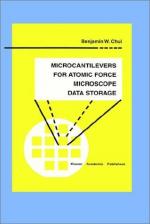|
This section contains 347 words (approx. 2 pages at 300 words per page) |
In 1985, the development of the atomic force microscope (AFM) allowed scientists to visualize the surface of cellular structures during some physiological processes. Along with the use of field ion microscopes and powerful scanning tunneling microscopes (STM), these advances in microscopy represent the most fundamental greatest advances since the development of the electron microscope.
Invented by Gerd Binnig and Christoph Gerber in Zurich, Switzerland, and Calvin Quate (1923- ) in California, the AFM uses a tiny needle made of diamond, tungsten, or silicon, much like those used in the STM. While the STM relies upon a subject's ability to conduct electricity through its needle, the AFM scans its subjects by actually lightly touching them with the needle. Like that of a phonograph record, the AFM's needle reads the bumps on the subject's surface, rising as it hits the peaks and dipping as it traces the valleys. Of course, the topography read by the AFM varies by only a few molecules up or down, so a very sensitive device must be used to detect the needle's rising and falling. In the original model, Binnig and Gerber used an STM to sense these movements. Other AFM's later used a fine-tuned laser. The AFM has already been used to study the supermicroscopic structures of living cells and other objects that could not be viewed with the STM.
American physicist Paul Hansma (1946- ) and his colleagues at the University of California, Santa Barbara, conduct various studies using AFM research. In 1989, this team succeeded in observing the blood-clotting process within blood cells. Hansma's team presented their findings in a 33-minute movie, assembled from AFM pictures taken every ten seconds. Other scientists are utilizing the AFM's ability to remove samples of cells without harming the cell structure. By adding a bit more force to the scanning needle, the AFM can scrape cells, making it the world's most delicate dissecting tool.
Scientists continue to apply this method to the study of living cells, particularly fragile structures on the cell surface, whose fragility makes them nearly impossible to view without distortion.
|
This section contains 347 words (approx. 2 pages at 300 words per page) |


